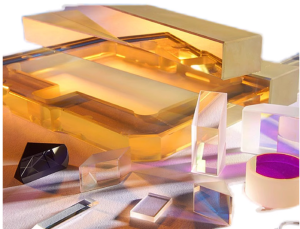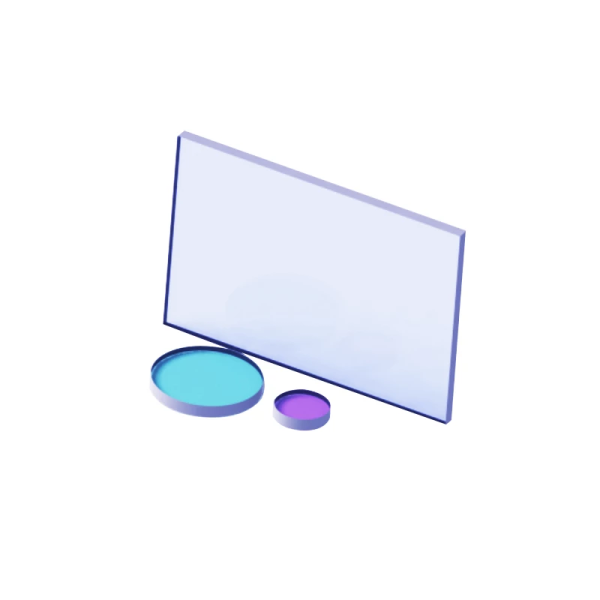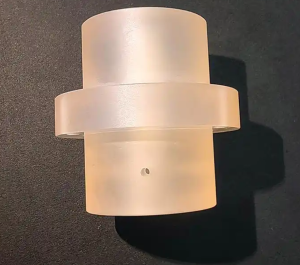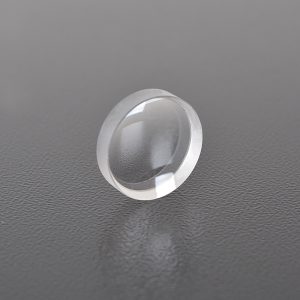
Key Parameters of Optical Lenses in High-frequency Laser Resistance
High-frequency lasers (such as ultraviolet lasers, femtosecond lasers, etc.) have extremely high peak power and energy density. As common windows for these lasers, optical lenses have extremely high requirements for their performance. In order to ensure the stability and reliability of optical lenses in high-frequency laser environments, a series of key parameters must be paid attention to. These parameters not only affect the design and manufacturing of lenses, but also pose severe challenges to material selection, processing technology and coating technology. Below we will analyze these key parameters and the challenges they bring.

I. Key parameters and their significance
1. Laser-induced damage threshold (LIDT) refers to the maximum laser energy density that a material or film can withstand, usually expressed in J/cm² or W/cm². LIDT is the most important parameter for measuring the ability of optical lenses to resist laser damage. If you want to know whether the pulsed laser damage threshold of the filter is within its tolerance range, you must calculate both the peak power of the pulsed laser and the average power of the pulsed laser.
For example, if the laser damage threshold of an optical window is 500mW/cm2, for a pulse laser with a pulse energy of 10J/cm2, a pulse width of 10ns, and a frequency of 50kHz.
According to calculations, its average power is: 10J/cm2 X 50kHz = 0.5mW/cm²,
The peak power is: 10J/cm2 / 10ns = 1000mW/cm2.
In terms of material selection, try to choose materials with high LIDT, such as fused quartz, calcium fluoride, etc. At the same time, the coating process and material suppliers must ensure the tolerance performance under high LIDT to avoid film damage.
2. Transmittance refers to the transmittance of the lens to a specific wavelength of laser, usually expressed as a percentage. High transmittance can reduce energy loss and improve system efficiency. High-purity materials can effectively reduce impurity absorption and improve transmittance. In terms of coating, anti-reflection film (AR film) needs to be precisely designed to maximize transmittance.
3. Absorption refers to the absorption ratio of the optical lens to the laser energy. Low absorption reduces the thermal effect and prevents lens damage. Common low absorption materials such as fused quartz and calcium fluoride must ensure low absorption when coating the film.
4. The coefficient of thermal expansion (CTE) is the expansion or contraction degree of the material under temperature changes. Low thermal expansion coefficient can reduce thermal stress and improve the thermal stability of the lens. Taking the hair removal device as an example, if conventional optical glass is used, it is easy to cause overheating and cracking or thermal bending. The thermal expansion coefficients of the lens material and the base material need to match to reduce thermal stress. At the same time, attention should also be paid to effective heat dissipation structure to prevent thermal deformation.
5. Surface roughness: The microscopic unevenness of the lens surface, usually expressed in nanometers (nm). Low surface roughness can reduce scattering and local hot spots, improve LIDT, and also involves the need for ultra-precision polishing technology to achieve sub-nanometer surface roughness. A clean environment needs to be maintained during the manufacturing process to prevent pollution and keep the surface smooth.
6. Homogeneity refers to the consistency of the optical properties inside the material. High homogeneity ensures the stability and consistency of laser transmission. Of course, high homogeneity materials need to be accompanied by advanced manufacturing processes, and the uniformity of materials must be strictly tested to ensure consistent performance.
2. Challenges of parameters to materials, processing and coating
Common material choices such as fused quartz and calcium fluoride need to have high purity and uniformity. Low absorption materials can effectively reduce laser energy absorption and prevent thermal damage. Low thermal expansion coefficient materials, such as Zerodur (microcrystalline glass), are used in high-power laser systems.
In terms of processing technology, sub-nanometer surface roughness is achieved to reduce local hot spots, effectively control high-precision shapes, and ensure optical performance. This requires processing in a clean room to prevent contamination and defects.
In terms of coating technology, high LIDT materials such as SiO2 and HfO2 can be used. Low absorption film layers can optimize film layer design and reduce absorption. Multilayer film design requires precise control of the thickness and refractive index of each layer to achieve high transmittance and low reflectivity.
3. Classification description
1. UV laser lens
Parameter requirements:
– Low (>5J/cm²)
– High transmittance (>99% @ 193-355 nm)
– Low absorption (<0.1%)
– Material selection: fused silica, calcium fluoride.
– Coating technology: high LIDT anti-reflection film.
2. Femtosecond laser lens
Parameter requirements:
– Ultra-high LIDT (>10 J/cm²)
– High transmittance (>99% @ 800-1100 nm)
– Low absorption (<0.01%)
– Material selection: fused silica, sapphire.
– Processing technology: ultra-precision polishing, sub-nanometer surface roughness.
3. High-power continuous laser lens
Parameter requirements:
– Low (>1 kW/cm²)
– High transmittance (>99% @ 1064 nm)
– Low thermal expansion coefficient (<1×10/K)
– Material selection: Zerodur, fused silica.
– Thermal management: effective heat dissipation design to prevent thermal deformation.
In short, when optical lenses are resistant to high-frequency lasers, they need to pay attention to key parameters such as LIDT, transmittance, absorptivity, thermal expansion coefficient, surface roughness and uniformity. These parameters pose severe challenges to material selection, processing technology and coating technology. By optimizing these parameters, the laser damage resistance and optical performance of optical lenses can be significantly improved to meet the stringent requirements of high-frequency laser systems.
Hanzhong Brisun Optics Co., Ltd. Is the high precision optical element manufacturer provides customized production of Various optical lenses, including spherical lens, cylindrical lens, optical window, mirror, prism, filter, metal base mirror and other high-precision optical elements. The base materials include various optical glass, fused quartz, calcium fluoride (CaF2), zinc selenide (ZnSe), germanium (GE), silicon (SI), sapphire, metal and other materials. And provide antireflective film, high reflection film, spectroscopic film, metal film and other optical coatings.
Welcome to OEM and Purchasing!


